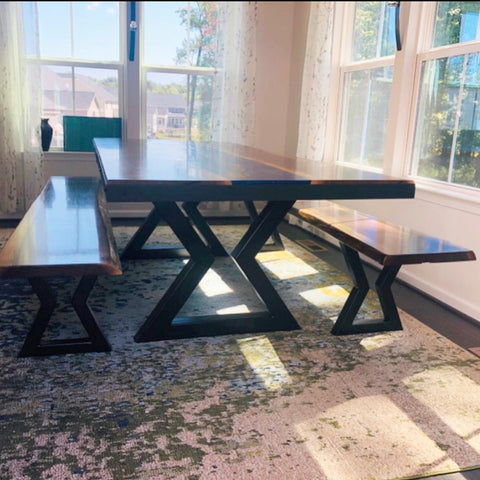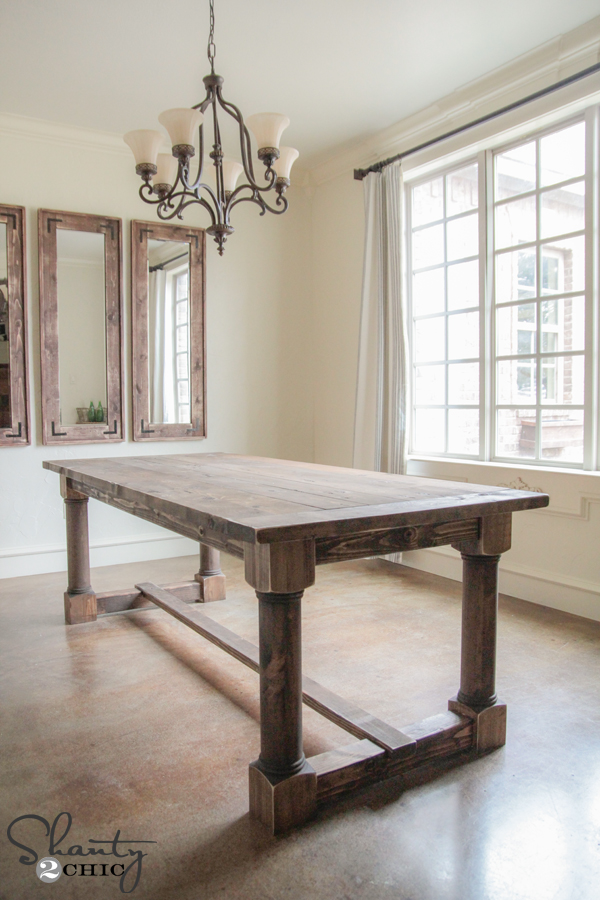How to Maintain and Care for Your Dining Room Table Legs
How to Maintain and Care for Your Dining Room Table Legs
Blog Article
How to Select the Perfect Eating Area Table Legs for Your Home Decoration
Selecting the suitable dining room table legs is a nuanced process that calls for mindful factor to consider of different aspects, including your area constraints, visual choices, and functional demands. The interplay in between designs, materials, and measurements can substantially affect the setting of your dining location, making it crucial to approach this choice carefully.
Assess Your Eating Space
Assessing your eating space is crucial for picking the right table legs that enhance both aesthetic appeals and functionality. Begin by gauging the dimensions of your eating area, consisting of ceiling elevation, floor room, and distance to various other furniture. This details will help figure out the suitable dimension and height of your eating table, which directly influences the selection of table legs.
Following, consider the style and format of your dining room. An open-concept layout might benefit from table legs that use visual lightness, such as slender steel or acrylic alternatives. Conversely, an extra conventional setup could call for sturdy wooden legs that supply a sense of durability.
Evaluate the existing color palette and materials in your dining area. Harmonizing the table legs with these aspects produces a natural appearance that boosts the overall style. Furthermore, think of the performance called for in your area. If you often hold big events, consider legs that offer extra assistance and stability.
Eventually, a comprehensive assessment of your eating room will certainly assist you in making an educated decision, guaranteeing that your table legs not only boost the aesthetic charm but additionally serve practical objectives.
Consider Your Style Preferences
When choosing dining-room table legs, it is vital to show on your personal design choices, as they substantially influence the overall visual of your eating space. Your selection of table legs can either enhance or contrast with existing decor, making it critical to align them with your preferred indoor style motif.
If your home leans in the direction of a modern-day visual, think about sleek steel or minimalist wood legs that offer a tidy, clean look. For a much more conventional approach, ornate wood legs with complex carvings can add a touch of elegance and class. Industrial styles benefit from robust, raw products such as reclaimed wood and steel combinations, mirroring a tough charm.
Furthermore, farmhouse and rustic designs typically prefer durable, beefy legs that evoke a feeling of heat and comfort. Conversely, if your decor is eclectic, you may choose unusual shapes or a mix of products to develop visual rate of interest.

Evaluate Material Options
The option of product for eating area table legs plays a critical function in both durability and aesthetic charm. Usual products consist of timber, steel, and composite alternatives, each offering unique features that can affect the total appearance and long life of your table.
Timber is a timeless selection, known for its warmth and flexibility. Hardwoods like oak and walnut offer outstanding stamina and can be completed in different spots to match any type of decoration. Nonetheless, softwoods like want are a lot more susceptible to dents and scratches, making them less suitable for high-traffic locations.
Steel legs, usually crafted from steel or aluminum, exhibit modernity and commercial appeal. They are resistant and highly durable to put on, making them ideal for households with children or constant celebrations (dining room table legs). Additionally, steel can be completed in various shades, improving the customization opportunities
Composite products, such as MDF or laminate, offer cost and varied styles. While normally less resilient than solid timber or metal, they can still provide an elegant appearance and are frequently simple to maintain.
Inevitably, the material you pick must align with your way of life, aesthetic choices, and the level of usage your table will certainly experience.
Determine Height and Dimension
Choosing the ideal height and dimension for your dining area table is vital for both functionality and comfort. The standard elevation for dining tables normally ranges from 28 to 30 inches, enabling ample legroom for a lot of people when seated. Nevertheless, it is important to think about the measurements of your dining area and the sorts of chairs you plan to utilize.

Furthermore, consider the proportions of your dining-room. A larger table in a large location can produce a grand atmosphere, while a smaller sized table works well in more intimate settings. Eventually, the right height and size will harmonize with your overall decor and enhance the dining experience for you and your visitors.
Explore Modification Opportunities

Additionally, the layout of the legs can be personalized to fit various styles, such as rustic, modern, or commercial. Conical legs can evoke a mid-century modern feel, while chunky, block-style legs might reverberate with typical or farmhouse decoration.
Property owners can additionally check out shade surfaces, from all-natural wood spots to paint, allowing them to match or contrast with the tabletop and bordering design.
In addition, leg height can be readjusted to fit specific seating plans or personal preferences, boosting both comfort and performance.
Last but not least, distinct decorations, such as carvings or attractive braces, can even more individualize the table legs, making the eating experience not just a dish yet a statement piece in the home. By thinking about these customization choices, house owners can create a dining space table that absolutely reflects their uniqueness.
Verdict
Selecting the optimal eating room table legs requires cautious factor to consider of numerous factors, including the measurements of the dining space, style preferences, product longevity, and desired height. Personalization choices additionally boost the capability to accomplish a cohesive visual that enhances the total style. By systematically assessing these components, homeowners can ensure that the chosen table legs not only satisfy functional requirements but also contribute favorably to the dining experience and ambiance of the home.
Picking the ideal dining area table legs is a nuanced procedure that calls for cautious consideration of different aspects, including your area restrictions, aesthetic preferences, and sensible demands.Analyzing your eating area learn the facts here now is essential for selecting the right table legs that complement both aesthetic appeals and performance.When identifying size, gauge the location where the table will be placed get more to guarantee it fits easily, allowing for at the very least 36 inches of clearance around the table for very easy motion. A larger table in a sizable location can create a grand setting, while a smaller sized table works well in even more intimate setups.Choosing the perfect eating space table legs requires mindful consideration of various aspects, including the measurements of the eating space, style preferences, product longevity, and preferred elevation.
Report this page